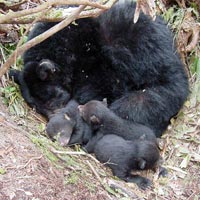Lyopreservation

Okay kiddo, imagine you have a yummy ice cream cone but you can't eat it all right now. You want to save some for later, but if you just leave it out on the table it will melt and be ruined.
So what do you do? You put it in the freezer! By making the ice cream really cold, it stays fresh and delicious for much longer.
Now, scientists sometimes have something they want to save too, but it's not ice cream - it might be special cells or even living things! They don't want these things to melt or die, so they use a process called lyopreservation.
Lyopreservation is like putting things in the freezer, but instead of making them really cold, they make them really dry. They do this by taking out all the water from the cells or living things with special machines.
So just like your ice cream, once all the water is gone, the things can last longer without spoiling. They can be stored at room temperature for years and years, and then, when scientists need them again, they can put water back in and they will come back to life!
Isn't that cool? Lyopreservation is a way for scientists to save things that are very important, so they can study them and learn from them for a long time.
So what do you do? You put it in the freezer! By making the ice cream really cold, it stays fresh and delicious for much longer.
Now, scientists sometimes have something they want to save too, but it's not ice cream - it might be special cells or even living things! They don't want these things to melt or die, so they use a process called lyopreservation.
Lyopreservation is like putting things in the freezer, but instead of making them really cold, they make them really dry. They do this by taking out all the water from the cells or living things with special machines.
So just like your ice cream, once all the water is gone, the things can last longer without spoiling. They can be stored at room temperature for years and years, and then, when scientists need them again, they can put water back in and they will come back to life!
Isn't that cool? Lyopreservation is a way for scientists to save things that are very important, so they can study them and learn from them for a long time.
Related topics others have asked about:
